#Eatonville
Explore tagged Tumblr posts
Text
#eatonville#black church#voting#early voting#black people#blacklivesmatter#black lives matter#police brutality#black history#vote blue#vote kamala#kamala 2024#kamala harris#2024 presidential election#democrats#donald trump#republicans#politics#kamala for president
51 notes
·
View notes
Text

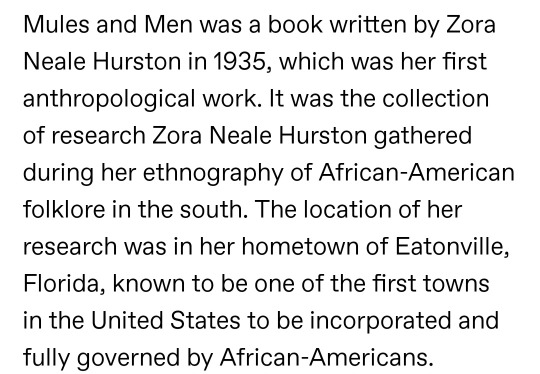
She also collected stories from New Orleans. In her introduction to Mules and Men, she wrote, "Florida is a place that draws people - white people from all over the world, and negroes from every Southern state surely and some the North and West."
Hurston documented 70 folktales during the Florida trip, while the New Orleans trip yielded a number of stories about Marie Laveau and voodoo traditions. Many of the folktales are told in vernacular; recording the dialect and diction of the Black communities Hurston studied. She would also go on to study folktales from the Caribbean, including Jamaica and Haiti. Sterling Allen Brown was another writer who also studied folktales and vernacular from the South.
#mules and men#zora neale hurston#book#folktales#anthropology#history#eatonville#florida#new orleans#louisiana
107 notes
·
View notes
Text
There was in Eatonville a magic three days " mini Woodstock" festival. Choppers flyed around told hippies that the concert was illegal, but they don't care. They were free.

Buffalo rock it called. At Don Murphy's ranch.
Don Murphy was a rly mad person... Nowadays their sons and grandsons still talking about him and their stories...

And ofc, all hippies who enjoyed the festival... Acid, nice music, freedom, love and brotherhood.. " 100% free volunteers who secure each others " told me a dear old hippie brother who was there. Amazing story I didn't know ...



Thx for share @vaxacahau 🫂☮️✌️

#freedom#bohemian#hippie#peaceandlove#buffalo rock#early 70's#hippie party#hippie dream#brotherhood#acid#good music#eatonville#pig roast#mini woodstock#lost archives of hippie story#i bornt 50 years later
21 notes
·
View notes
Text

Zora Neale Hurston: Their Eyes Were Watching God (1937)
#zora neale hurston#their eyes were watching god#virago#literature#time 100#eatonville#zadie smith#okeechobee#harlem renaissance
7 notes
·
View notes
Text
Here's This Year's List of the Most Endangered Historic Places in the U.S.
— May 1, 2024 | Neda Ulaby

Built in 1921, the New Salem Baptist Church served Black coal miners and their families in Tams, West Virginia. Cody Straley/WV SHPO/National Trust for Historic Preservation
There's a lonely old church in the mountains of West Virginia that holds a hidden history. Black coal miners in a segregated camp worshipped there starting in the 1920s. Now, the New Salem Baptist Church is listed as one of America's 11 most endangered historic sites.
The National Trust for Historic Preservation has released a list highlighting such places every year since 1988. Carol Quillen is the organization's new president and CEO. Trained as a historian, she was the first female president of Davidson College in North Carolina.
"I studied the past largely through texts, not places," Quillen told NPR. "And the difference between imagining one's relationship to the past through experiencing a place and reading a book in a library is really profound. So I love the way these places, which themselves hold layers and layers of stories, and invite us in the present to connect our stories to the ones these places hold."
Quillen said the push to preserve the New Salem Baptist Church came from a white Catholic woman whose father was the town's milkman. She enlisted not just the descendants of the church's original parishioners but also local ATV riders who could see and admire the church from a mountain trail.
"I love stories like that where a preservation project can mobilize folks who normally wouldn't encounter one another to work together on something significant to all of them," Quillen said. "And in that work, transform what the place can mean."
Black residents of Eatonville, Fla., have been trying to preserve their hometown for decades. One of the first self-governing all-Black towns in the United States, Eatonville was immortalized in the classic 1937 novel Their Eyes Were Watching God by Zora Neale Hurston. The legendary Harlem Renaissance writer and anthropologist once described her hometown as "the city of five lakes, three croquet courts, 300 brown skins, 300 good swimmers, plenty guavas, two schools and no jailhouse."
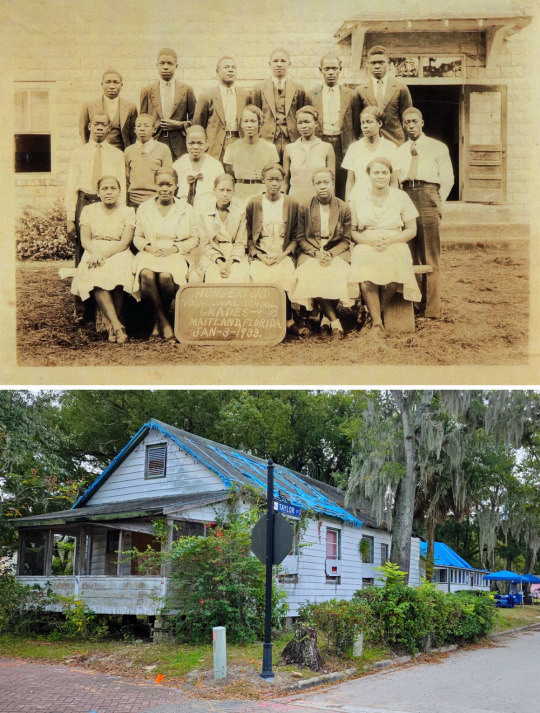
Top: Hungerford Vocational School students in 1933 in Eatonville, Florida. Preserve the Eatonville Community Archives/National Trust for Historic Preservation
Bottom: Thomas House is the oldest structure in Eatonville and the original site of the St. Lawrence African Methodist Episcopal Church. Melissa Jest/National Trust for Historic Preservation
In a 2015 NPR story reported by Renata Sago, residents dreamed of an Eatonville reborn as a year-round heritage destination and remembered it as a refuge during the days of Jim Crow.
"We didn't lock our doors and kids could go out and play," recalled an elderly resident, Maye Saint Julian. "And everybody knew everybody. And all of these people that we honor so — James Brown, B.B. King, Lionel Hampton — these people came to Eatonville on a regular basis."
Ideally, Eatonville and many other sites on the list, such as the Cindy Walker House, could eventually become better-known cultural destinations. Located in Mexia, Texas, the ramshackle white frame structure was where a remarkable, unsung figure in country music lived for many years. Walker was one of the few female songwriters of her era. She wrote country standards and number one hits for Roy Orbison, Merle Haggard, Elvis Presley and more.
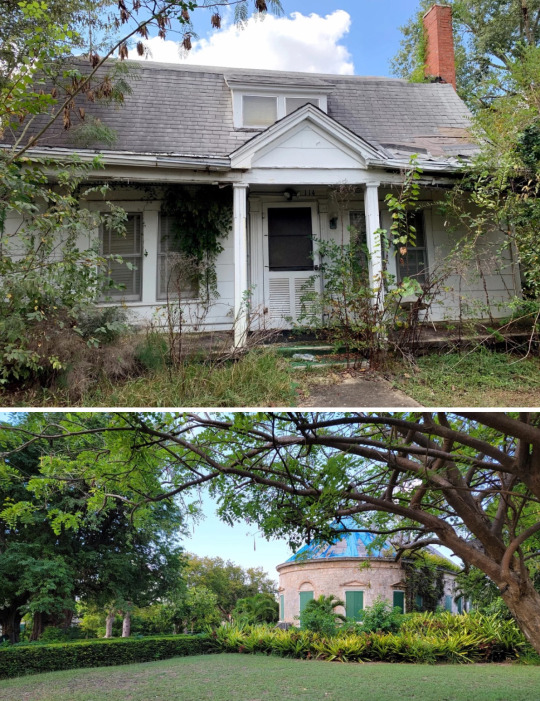
Top: Country singer Cindy Walker's home in Mexia, Texas. Cindy Walker Foundation/National Trust for Historic Preservation
Bottom: Tarps cover hurricane damage on the roof of the Estate Whim Great House. St. Croix Landmarks Society/National Trust for Historic Preservation
After she died in 2006, Walker's house was left abandoned. A handful of fans and heirs formed a foundation in her honor and purchased it in 2022.
"They found all kinds of things there," Quillen said. "They found her typewriter. They found her country music awards. They found songs that no one had ever heard before." One of those songs was a lost demo, called "Tennessee Rain," that can be heard in the audio version of this story.

This press photo of country singer Cindy Walker was among many never-before-seen photos recovered from the home. Cindy Walker Foundation/National Trust for Historic Preservation
Over the past three decades, the National Trust has seen some triumphs with its annual list of endangered places. Dozens of them have been saved, including the Antietam National Battlefield in Maryland, which narrowly missed becoming the site of a shopping mall, and Little Rock Central High School, where young Arkansas students helped overturn a legacy of legal segregation in 1957.
Now established by Congress as a National Historic Site, it's still a working public high school and a center for education about the country's civil rights.
"We don't want to spray these sites with ScotchgarEd, you know, and roll them off," Quillen said. "We really want to reinvigorate them so that they're active, exciting places for people to go so that they can continue to bring people together now and long into the future."
Here are the rest of the endangered historic places on the list this year:
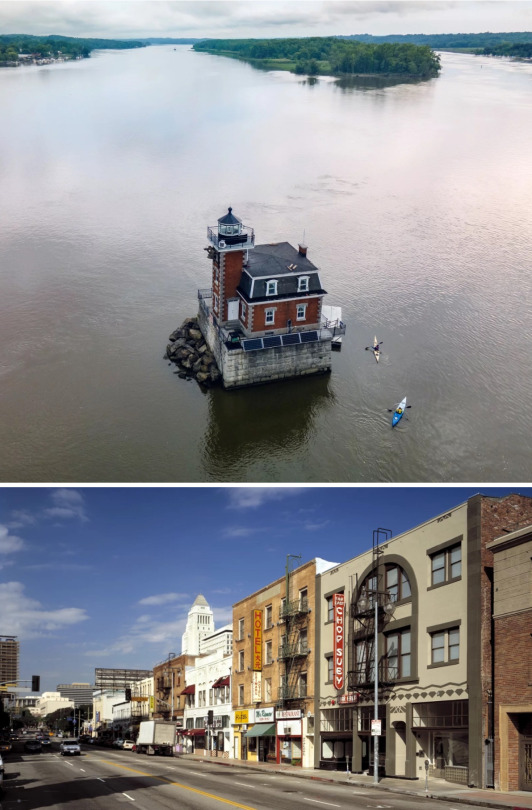
Top: The Hudson-Athens Lighthouse is one of two "middle-of-the-river" lighthouses left standing on the Hudson River. David Oliver/National Trust for Historic Preservation
Bottom: 1st Street is the major thoroughfare in Los Angeles' Little Tokyo. Kristin Fukushima/National Trust for Historic Preservation
Estate Whim Museum, Frederiksted, St. Croix, U.S. Virgin Islands: "Established during the colonization of St. Croix by Denmark, Estate Whim was a plantation producing cotton and sugar for export. The lives and legacies of those enslaved by plantation owners and those who continued to labor there for meager wages for a century after emancipation are inextricably tied to the site, which now hosts a museum, library and archives, and public programming. Repeated hurricanes have damaged many of Estate Whim Museum's historic buildings and structures."
Hudson-Athens Lighthouse, Athens, N.Y.: "Opened in 1874, the Hudson-Athens Lighthouse used to be one of several 'middle-of-the-river' lighthouses on the Hudson River. Now, it's one of only two left standing. However, due to erosion and other preservation challenges, engineering reports indicate the building is at risk of collapse within three years if no action is taken."
Little Tokyo, Los Angeles, Calif.: "Little Tokyo is one of only four remaining Japantowns in the United States and one of the oldest neighborhoods in Los Angeles, but its unique character is endangered by large-scale development and transit projects and displacement of legacy businesses and restaurants."
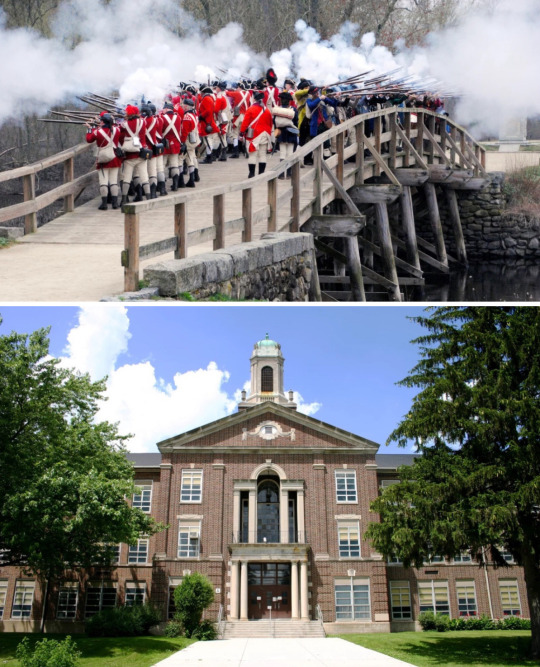
Top: Minute Men and British reenactors fire a musket salute off the North Bridge at Minute Man National Historical Park. Neil Lynch/National Trust for Historic Preservation
Bottom: Theodore Roosevelt High School in Gary, Ind., in 2015. Tiffany Tolbert/National Trust for Historic Preservation
Minute Man National Historical Park, Walden, and nearby landmarks, Massachusetts: "Minute Man National Historical Park and the nearby areas of Concord, Lexington, Lincoln, and Bedford are home to places of great significance in American history, including Walden Pond and Woods and the preserved homesteads of authors and environmentalists: Little Women's Louisa May Alcott, Nathaniel Hawthorne, Ralph Waldo Emerson, and Henry David Thoreau. A proposed major expansion of nearby Hanscom Field airport could significantly increase private jet traffic, leading to increased noise, vehicular traffic, and negative environmental and climate impacts."
Roosevelt High School, Gary, Ind.: "Theodore Roosevelt High School in Gary was built in 1930 specifically to serve the educational needs of Black Americans and has graduated notable alumni including professional athletes, well-known actors, and members of The Jackson 5. The school has been unoccupied and deteriorating since 2019."
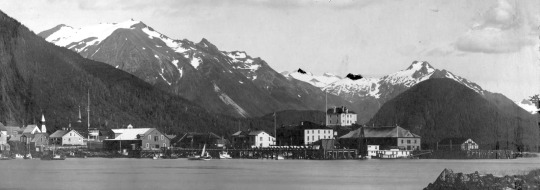
A view of Sitka Indian Village from across Sitka Harbor, circa 1900-1930. Library of Congress/National Trust for Historic Preservation

The Sitka Tlingit Village in 2024. James Poulson/National Trust for Historic Preservation
Sitka Tlingit Clan Houses, Sitka, Alaska: "The Sitka Tlingit Clan Houses in southeast Alaska are critically important to both the history and the future of the Lingít (commonly spelled in English as "Tlingit"). For many years, the matrilineal clan structure of multigenerational extended families living together in clan houses was discouraged in favor of the Western practice of living with nuclear families. Today, only eight of the original 43 clan houses remain and even fewer still function as clan houses in the traditional way."
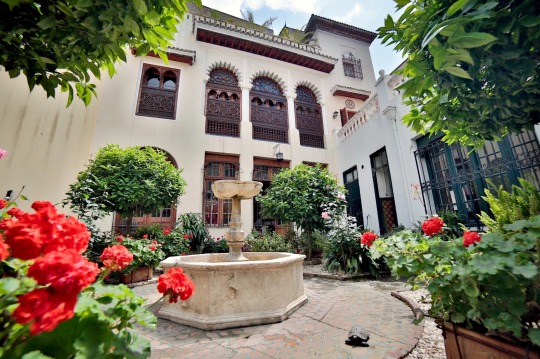
Tangier American Legation's main courtyard. Tangier American Legation Institute for Moroccan Studies/National Trust for Historic Preservation
Tangier American Legation, Tangier, Morocco: "In 1821, the Tangier American Legation in Morocco was gifted to the United States by the Moroccan Sultan as a token of friendship, becoming the first American public property located abroad, and subsequently served as a U.S. diplomatic mission for a record 140 years. Now a cultural center, museum, and research library, the Legation is in urgent need of structural stabilization and repairs following the recent collapse of an adjacent building."
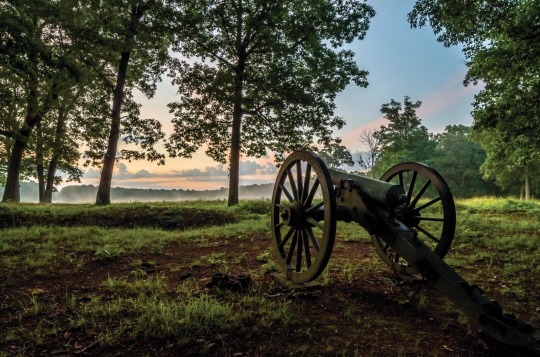
A cannon on the Wilderness National Military Park. Lori Coleman/American Battlefield Trust/National Trust for Historic Preservation
Wilderness Battlefield Area, Orange County, Virginia.: "The Battle of the Wilderness marked a pivotal turning point in the Civil War, but today, not all the historically significant landscape is protected. Proposed large new developments, including millions of square feet of industrial data centers and thousands of homes, may negatively impact important historic sites and landscapes and degrade the visitor experience."
#All-Black-Towns#Cindy Walker#Citka#The National Trust For Historic Preservation#Eatonville#Zora Neale Hurston#Historic Preservation#The Most Endangered Historic Places | U.S. 🇺🇸#NPR.ORG
0 notes
Text
this is very true. so many Black cities in florida have just been erased as though the people and the history was never there. we can't allow that to happen. we need to continue documenting the stories. we need to keep the history front page. we need to demand that our real history be included in all history books across america.
Eatonville was Paradise for so many Black families
Digital Humanities and the Black Community
The discussion of Eatonville, and even digital elements of historical projects involving the town, are nothing new to this blog. Continuing that idea to what exactly entails Black digital history is no surprise either, and perfectly fits into the public aspect of any research involving the area. This topic is further complicated however by the difficulty of finding primary source material, the continual gentrification of Black communities, and the erasure of Black history from a local level. Some projects, such as Mapping Black Imaginaries and Geographies (MAPPING BIG), attempt to tackle all of these problems. While Eatonville and the Hungerford School may not be at the level, this project does provide a model to aspire and build on for the work we can do here.
Defining digital humanities, none the less digital history, is difficult enough. Such a task becomes magnitudes more challenging when considering Black digital history. As with physical spaces and academic history, Black humanities tends to be overlooked or outright forgotten. Even something as supposedly simple as labeling the subject as Black history rather than African American studies can be contentious[1]. However, based on previous experience with people of Eatonville, the term of Black community and studies will be used here as it was previously. But one of the greatest advantages of digital humanities is greater outreach and accessibility making the internet an incredible tool for historical projects that may not have any physical space. It also allows for greater community engagement, which projects like this heavily rely on. Gaining insight into these communities is key to research, as oral interviews are indispensable both for the information given and the avenues of research they lead towards. All of this creates a perfect application of digital history projects, even if defining Black digital humanities is challenging.
All of this helped to contribute to the idea of the Zora Festival. This came about as a collaborative effort to engage with the history of Eatonville and the academic community at large to preserve and make the greater Central Florida community aware of what has occurred in their own area[2]. It also has worked as a way to build momentum to help physically preserve the area from gentrification, assuming that if people know and care about the area they will be more likely to step in and argue for the maintenance of the physical community. This argument of outreach and sharing of community knowledge is the basis of the previous project on Club Eaton, and the coming project of creating a digital tour off of the work done by Dr. Scot French.
As with many Black communities around the US, Eatonville has struggled with an erasure of history and culture. This erasure is not as extensive as some areas, largely because of people such as John Beecham have banded together around the town to hold fast to its history. Eatonville also has a long and proud history, being one of the first incorporated black townships in the US[3]. This history has predominately been saved because local people in the community try to ensure it stays that way. Part of this was done in the creation of the Zora festival and celebrating her connection to her claimed hometown. Such history is not always remembered however, such as with other localities as Winter Park. While Winter Park was created from the beginning as a haven for wealthier snowbirds, it was always intended that black workers would be present to as service workers[4]. These workers would be part of the town year-round and we in fact a large presence of the original charter residence[5]. This was fairly progressive for the time, but shortly thereafter such ideas changed and the Black community was so no longer accepted in Winter Park. This part of the history is rarely discussed and nearly gone, along with the gentrification of the original Black community area of Hannibal Square.
There are many aspects to a digital history project that need to be considered. This becomes amplified when considering a project centered around a Black community. But the use of digital projects allows for greater communication between historians and community members and gives outreach for preservation that may not have been possible otherwise. This can be used to protect areas like Eatonville from gentrification. While physical Black spaces may be disappearing, digital ones can increase and overcome challenges traditional history has left unanswered.
[1] Kim Gallon , “Making a Case for the Black Digital Humanities,” Debates in the Digital Humanities, accessed January 25, 2023, https://dhdebates.gc.cuny.edu/read/untitled/section/fa10e2e1-0c3d-4519-a958-d823aac989eb.
[2] Scot French and Julian Chambliss, “A Generative Praxis: Volume 39,” Home, accessed January 25, 2023, https://scholarlyediting.org/issues/39/a-generative-praxis.
[3] Scot French, “Marked, Unmarked, Remembered: Exhibits Explore African American Experiences and Historic Ties That Bind Maitland and Eatonville,” Winter Park Magazine (Spring 2019): 64, 67.
[4] Chambliss, Julian C. and Scot A. French. Reframing History. Podcast Audio, 2018. https://podcasts.apple.com/us/podcast/episode-2-rethinking-the-city/id1399889989?i=1000414133429
[5] Ibid, https://podcasts.apple.com/us/podcast/episode-4-change-the-story/id1399889989?i=1000415021345
#eatonville#florida#Black in Florida#eatonville florida#Zora Neale Hurston#Black Communities#Florida History
4 notes
·
View notes
Text
Eatonville residents criticize efforts to limit how Black history is taught in Florida : NPR
Eatonville residents criticize efforts to limit how Black history is taught in Florida
How do keepers of Black history in Florida see changes to how Black history will be taught there? NPR talks with N.Y. Nathiri of the Association to Preserve the Eatonville Community.
A MARTÍNEZ, HOST:
Florida's Education Department approved a new social studies curriculum, which Vice President Kamala Harris alleged makes slavery seem positive. N.Y. Nathiri is in the middle of this. She leads the Association to Preserve the Eatonville Community. Eatonville, Fla., is considered the first U.S. town to be established by formerly enslaved people. Nathiri spoke with Michel Martin.
MICHEL MARTIN, HOST:
You're leading an organization dedicated to preserving the town's history. Could you just describe a little bit about why you think that's so meaningful?
N Y NATHIRI: It's so important that all of us know as much about the full story of the American saga. And it's very clear that over the generations, significant portions have not been included in what you might call the canon.
MARTIN: I assume that you've been watching with interest these efforts by state officials in Florida to limit, to change how Black history is taught in schools. How has this struck you?
NATHIRI: I think that I share the view of some historians who talk about what happened with the Reconstruction period and how there was an aggressive effort to retell, to reshape the story of the Civil War. There's an effort to try to get around what is actual fact so that if you can't refute what is fact, then you try to erase what is fact from easy public square.
MARTIN: It's interesting that some of these initiatives that the governor and his allies in the legislature have touted are intended to - they say they don't want white children to feel bad.
NATHIRI: All I can say is this - that the responsibility of each generation is to do the best that it can. What can you do? The history is the history. I mean, this is actually what happened. This is the latest assault. But I don't think that we should be wringing our hands in despair and woe is me, and what are we going to do? What we're going to do is to do what we have done historically, and that is to make sure that the true record, the factual record is actually available through other agencies.
MARTIN: Does it make you feel like your history is being erased in some way?
NATHIRI: No, absolutely not. You just have to stand. You have to stand up. You have to stand up. No one can erase you unless you allow that.
MARTÍNEZ: N.Y. Nathiri is the executive director of the Association to Preserve the Eatonville Community. She spoke with Michel Martin.
#Eatonville residents criticize efforts to limit how Black history is taught in Florida#florida#education#discrimination#Eatonville Florida#Zora Neale Hurston
26 notes
·
View notes
Photo


“In addition to the laws, white supremacists targeted Black communities, burning down their towns, churches, and businesses. Government officials also took part in destroying these towns. One example: Oscarville, Georgia.
In 1912, more than 1,000 Black people lived in Oscarville, a bustling farming community and the only Black town in Forsyth County. Threatened by Black progress, five Black men were suspects of an alleged rape and killing of a white woman. One of the Black men, Robert Edwards, was arrested, and was killed by a white mob that “dragged his body from the jailhouse and hung him from a telephone pole in the town.” After this, white supremacists amped up their violent attacks, forcing residents to leave or murdering them for refusing not to.”
(via Historic Black Towns Are in Danger - Capital B)
5 notes
·
View notes
Text

Eatonville Public School (opened 1870), Highway 427, northwest corner Bloor Street West, 1953
3 notes
·
View notes
Video
youtube
Minnesota Gov. Dayton Collapses During Speech
#youtube#FACTS NEW LIFE CENTER CHURCH EATONVILLE KIMBALLS WIFE DEAD THEY ALLLLLLLL GETTING OSCARS FOR THIS FK SHIIIII
0 notes
Text
On January 7th, we venerate Ancestor & Hoodoo Saint, Auntie Zora Neale Hurston on her 133rd birthday (updated 2024). 🎉
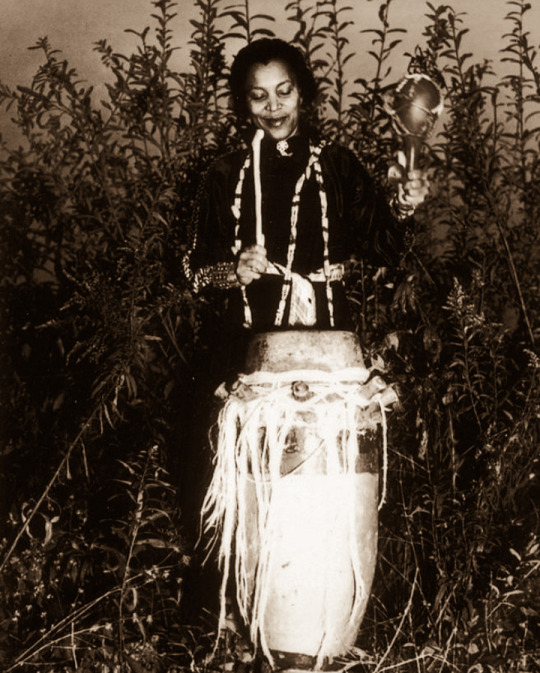
Novelist, Anthropologist, Folklorist, Scholar, Vodou initiate & Historian, Zora Neale Hurston's legacy is forever cemented in Hoodoo Culture (and beyond) as the masterful wordsmith who cast a shining light on black excellence in all everyday forms/spaces, our ATR roots, & the preservation of Black Voices during the prime of the Harlem Renaissance.
Auntie Zora was born in Notasulga, AL and raised on 5 acres of land in Eatonville, FL by her preacher-father and free-spirited mother ; in what would be the first all-Black township in the country. After the shattering loss of her mother, Zora turned up in Baltimore, MD where she presented herself as a 16 year old (10 years her junior) in order to access free public school education resources; thereby finishing school. From then on, Zora lived her life presenting herself as 10 years younger than she actually was. She'd go on to graduate from Barnard College in 1928.
She published several novellas & articles, including "Mules & Men"; a collection of Hoodoo Folklore. She entered the zenith of her career in the late 30s/40s after publishing her masterworks: "Their Eyes Were Watching God", "Tell My Horse", "Moses, Man of the Mountain", & an anthropological study on Hatian Vodou .After publishing her autobiography, "Dust Tracks on a Road, "Auntie Zora finally received the public recognition & literary respect that was long overdue. Despite her successes, and unprecedented contributions in classic literature & anthropology, Zora never received the financial contributions that her work so deserved.
Zora Neale Hurston passed away; penniless, alone, & drifting into obscurity. Friends and supporters from near and far raised $600 for her funeral service and burial. She was buried in an unmarked grave, in a segregated section, at the Garden Of Heavenly Peace Cemetery in Fort Pierce, FL. Over a decade later, in 1973 the Great Alice Walker found the unmarked grave and ordered a headstone to be placed on it; engraved with, "Genius Of The South" in Zora's honor. It remains in place today. “Let no Negro celebrity, no matter what financial condition they might be in at death, lie in inconspicuous forgetfulness. We must assume the responsibility of their graves being known and honored.” - Zora Neale Hurston to W.E.B. Dubois Auntie Zora wanted to be remembered & demanded that the same honor and respect be given unto her peers & others. Never forget the infectious voice that defined & defied, inspired & struck fear in many hearts of her time & after. We pour libations & give 💐 today as we celebrate Auntie Zora for her enigmatic spirit, ancestral wisdom, labor of love for Hoodoo Folklore, & for the seeing the beauty in the dark, sometimes solemn, corners in Black Culture. Let her studies continue to inform our own. Let her spark a fire in us to reconnect to our roots & grow within our lineages.
Offering suggestions: money, music, read/share her work, libations of water, & flowers.
‼️Note: offering suggestions are just that & strictly for veneration purposes only. Never attempt to conjure up any spirit or entity without proper divination/Mediumship counsel.‼️
#hoodoo Saints#Hoodoo Saint#zora neale hurston#Hoodoo#vodou#haitian vodou#the hoodoo calendar#hoodoohistory#hoodoos#atrs#atr#hoodoo culture#bvm#Hoodoo Folklore#Black authors#Black writers#own voices#Black Power
717 notes
·
View notes
Text

Lonnie Graham, Thompson Avenue, Eatonville, FL, 2003
81 notes
·
View notes
Photo

James Brown, Eatonville, FL, Please, Please, Please, 1961.
123 notes
·
View notes
Text

Clyde Kennard (June 21, 1927 - July 4, 1963) was an activist who pioneered the desegregation of higher education in Mississippi. After applying multiple times to Mississippi Southern College, he was framed and incarcerated in 1960 until his death.
Born in Hattiesburg, Mississippi, he moved to Chicago at age 12. In 1945 he joined the military and served for 7 years, when he received an honorable discharge after serving in Germany and Korea.
He left the University of Chicago where he was studying political science and moved to Eatonville, Mississippi to be with his mother on the 20-acre farm he had made the down payment on for her after returning from the military. There were no HBCUs nearby so he attempted to enroll in Mississippi Southern College, despite it being an all-white college.
The admissions department denied his application in 1955 because of state segregation laws but they cited the fact that he had not included recommendations from five Mississippi Southern alumni. He continued to attempt to enroll, in 1959 Mississippi Governor James P. Coleman met with him to convince him to desist from applying to Mississippi Southern.
He reapplied in August of 1959, threatening to take up the derailment of his application in federal court. He was rejected and soon after he was arrested for “driving with excessive speed” and “illegal possession of whiskey”. These claims were false.
He appealed these convictions to the Mississippi Supreme Court and the convictions were upheld. He was framed for stealing $25 worth of chicken feed, he was sentenced after a 10-minute trial by an all-white jury to seven years at Parchman Farm.
His case was reopened after evidence surfaced that he had been framed. The legal campaign to overturn his convictions lasted until 2006, when Johnny Lee Roberts, the man who had stolen the $25 of chicken feed, admitted that the arrest had nothing to do with the theft and everything to do with his attempts to enroll in Mississippi Southern College.
He was recognized for his bravery in 2006 when Haley Barbour, governor of Mississippi, exonerated him for his crimes. #africanhistory365 #africanexcellence
1 note
·
View note






